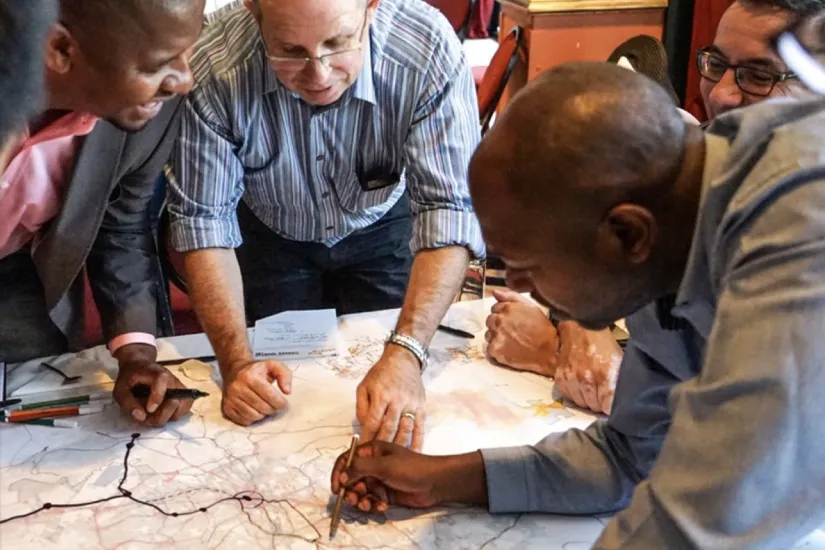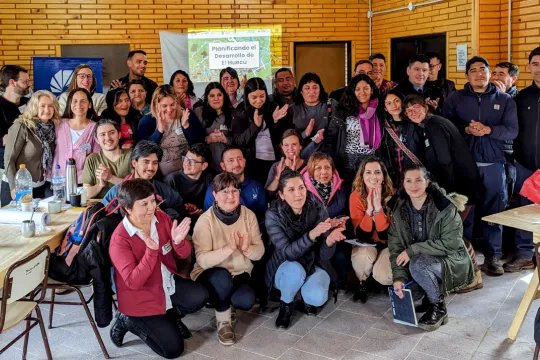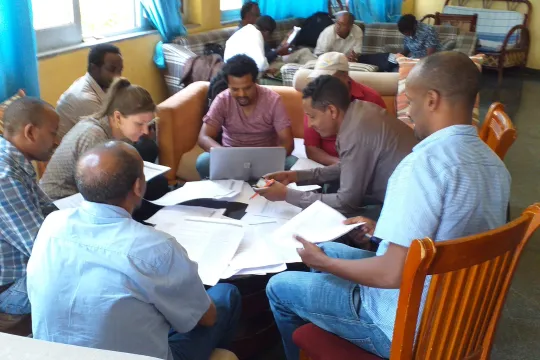
Introduction
The Spatial Development Framework (SDF) for Johannesburg 2040 is a city-wide spatial policy document identifying the main challenges and opportunities in the city, setting a spatial vision for the future city, and outlining a set of strategies that would lead to the realisation of that vision.
Importantly, along with providing a spatial vision, the SDF defines the priority transformation areas to be used in the City’s capital investment prioritisation model (Johannesburg Strategic Infrastructure Platform – JSIP). This will ensure that infrastructure investment is directed to priority areas as defined in the SDF.
The core objective of the SDF 2040 is to ‘create a spatially just world-class African city’. The SDF 2040 is premised on the notion of spatial transformation, defined through the principles of equity, justice, resilience, sustainability and urban efficiency which the SDF seeks to translate into a development policy.
The SDF is not a static master plan; it is rather a dynamic model of strategic planning that will be cyclically reviewed, adjusting the focus and direction based on city transformation that takes place on the ground.
Context and background
The apartheid practices of planning and urbanisation have led to the development of a spatial structure with many shortcomings: spatial inequality (including a stark job-housing mismatch), fragmentation and spatial disconnection, urban sprawl and limiting densities, limited land-use diversity and pressure on the natural environment. Although there is evidence of some reconstructive developments over the past decade the current structure and development patterns require revisiting in order to meet the future urban challenges in a sustainable manner.
The spatial transformation vision of the SDF 2040 seeks to create a spatially just world-class African city. The vision is based on a modeling exercise testing three development scenarios, each hypothesising the growth of Johannesburg from 4.3 million to 7 million people by 2040. The spatial vision envisaged by the SDF 2040 for Johannesburg is a compact polycentric city with a dense urban core linked by efficient public transport networks to dense, mixed-use, complimentary sub-centres, situated within a protected and integrated natural environment.
Plan and process
The review of the SDF was structured around a number of processes. A series of participatory sessions with different stakeholders, consultation with various departments was made within the City of Johannesburg and a public participation process took place in which a concept draft SDF was presented and debated and contributed to by various interest groups.
Use of Our City Plans
Our City Plans incorporated some of those lessons learned in this process, specifically the spatial vision and the development zones (consolidation and transformative zones) of the planning process. SDF foresaw participatory mapping and the simplificalisation of zoning and sustainable development structure and turned to activities and tools included in the OCP methodology.
Results
The City of Johannesburg faces numerous challenges moving forward, and the SDF provides a basis for dealing with the key issues confronting the city. The spatial transformation of Johannesburg will require a focused shift from the apartheid legacy and spatial patterns of the past to unlock the potential of the city. Today’s decisions and interventions will begin transforming the urban spatial and social form into a particular development direction for future decades. Real opportunities exist for embracing a new urban paradigm that is more conducive to both the present and long-term needs of Johannesburg’s population.
With the SDF, Johannesburg has an opportunity to seek policy and strategic directions that incorporate long-term sustainability for social, environmental and economic development.

